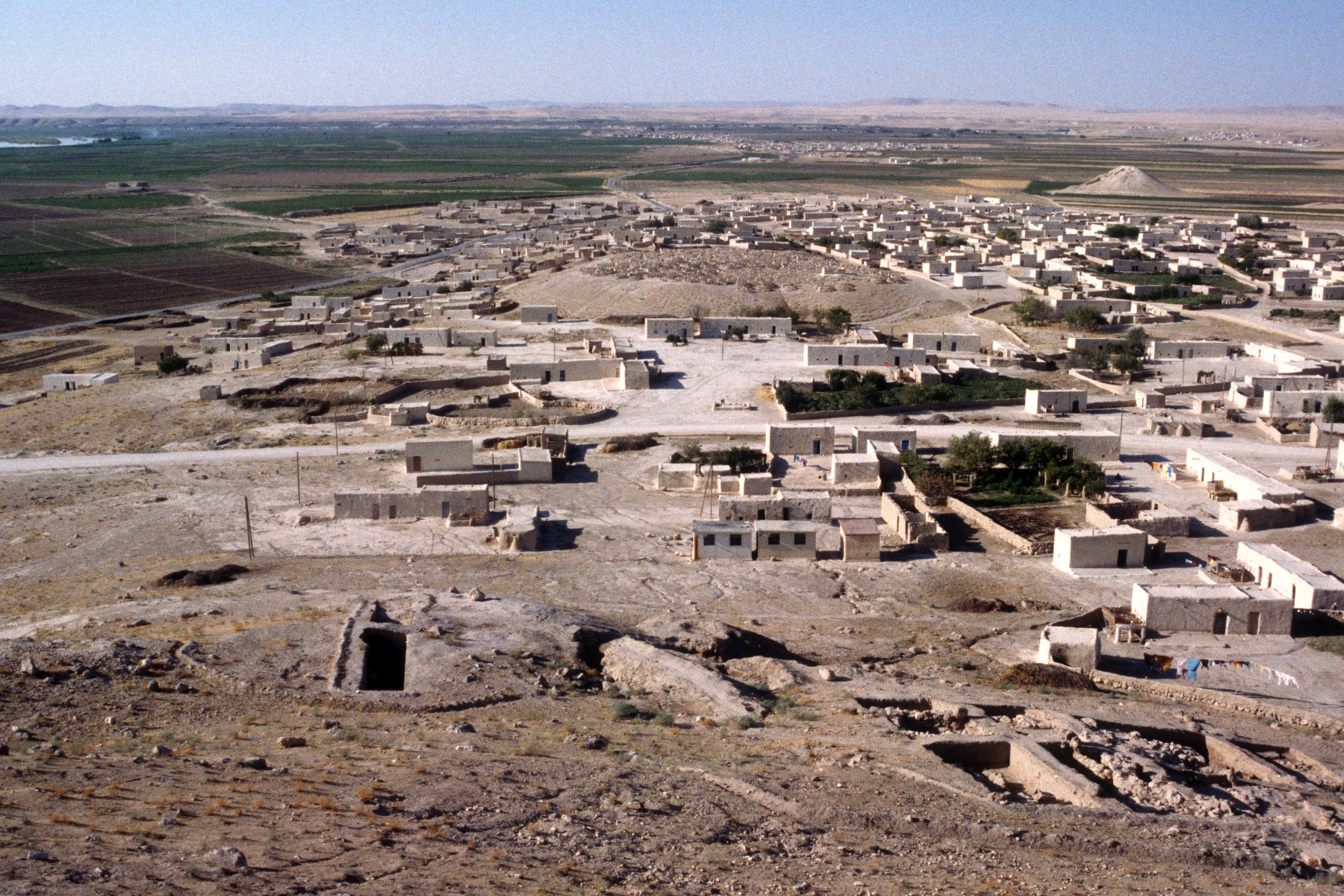
The Banat Publication Project is working on the results of the 1990s salvage excavations conducted at the third millennium BCE Tell Banat Settlement complex on the left bank of the Euphrates river, Syria. Two final site reports are in progress.
Volume One is the study of mortuary practices found in and around Tell Banat. Many of these burials are thus far unique in the third millennium of greater Mesopotamia. They include two built, earthen mounds. One, Tell Banat North, is a vertical cemetery. It is located about 200 m as the crow flies from the outer edge of the main settlement, Tell Banat, where the second earthen mound, Mortuary Mound II, was situated within the middle of the town. Each tumulus was enlarged in three distinct acts occurring within the same chronological phases. Each enclosed human remains of one kind or another. Tell Banat North, also known as the White Monument, is a series of mortuary deposits containing multiple secondary burials disported in various ways.
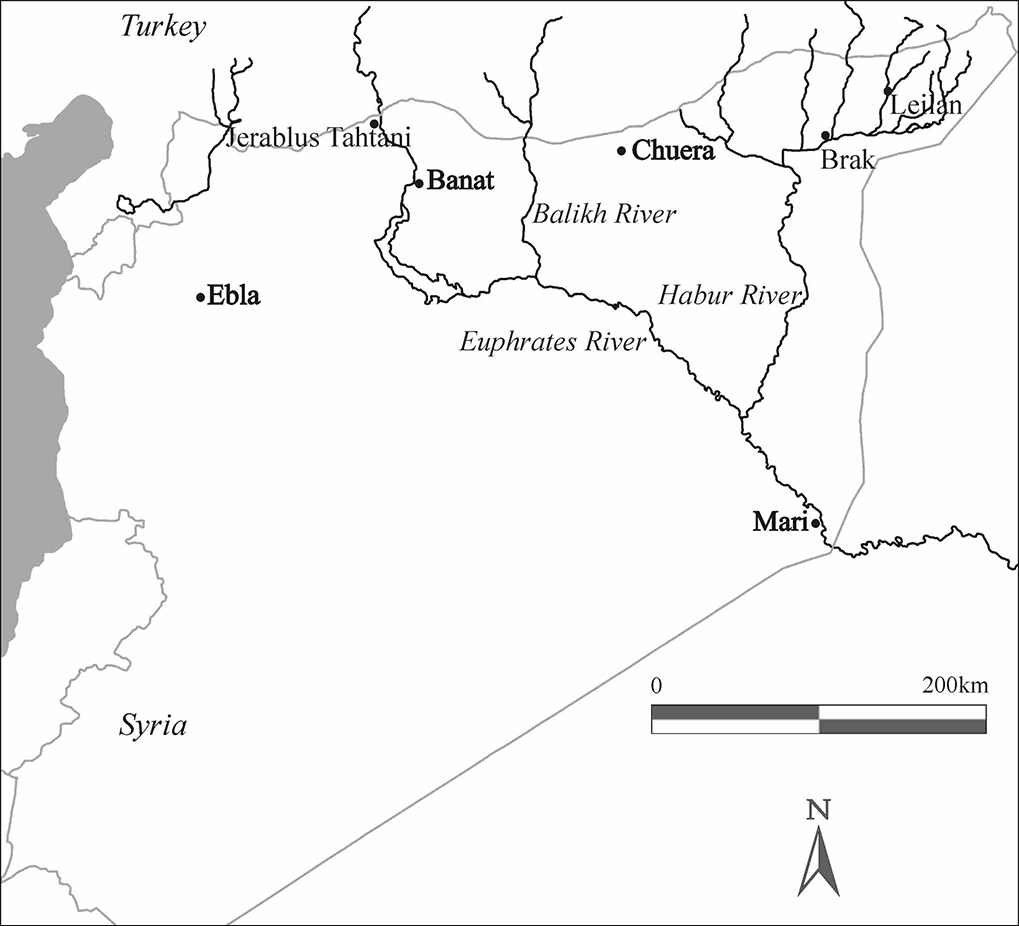
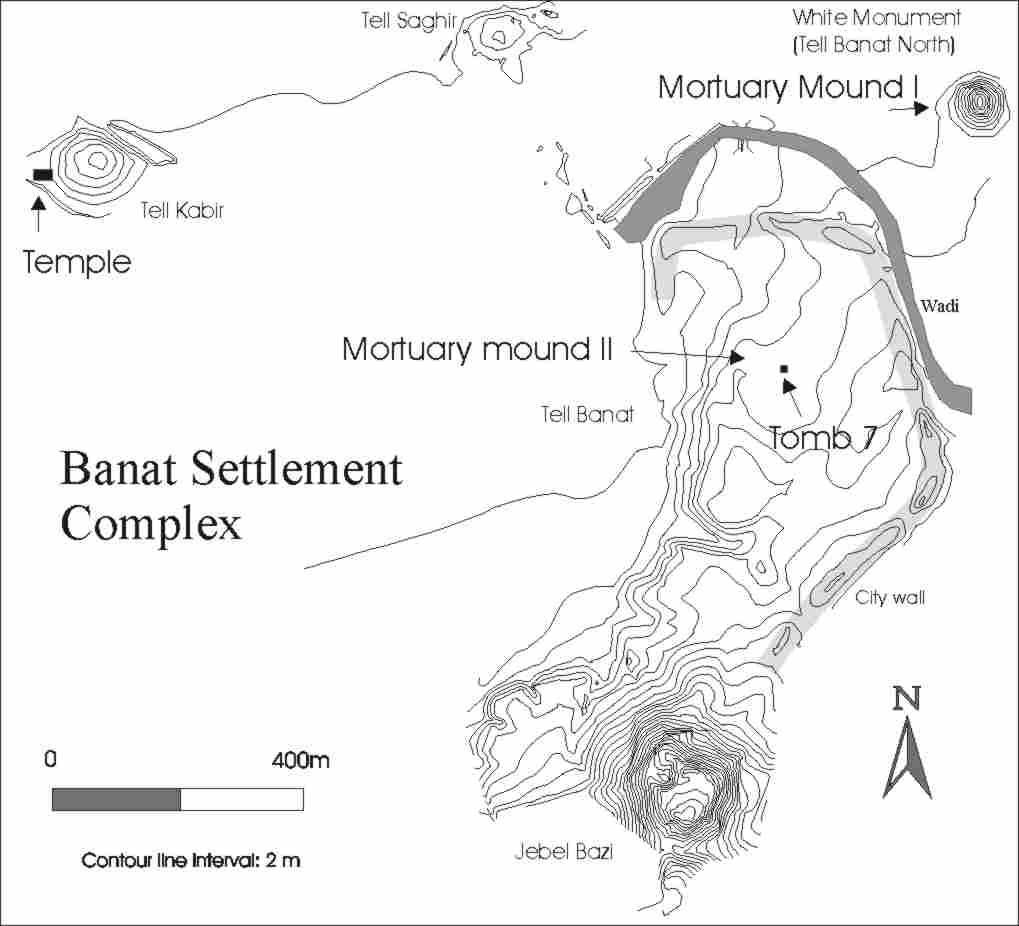
Mortuary Mound II began as a small tumulus that was then overlaid by a gravel deposit 60 m in diameter to form a shallow mound expanding the original tumulus. Built around the sides of that gravel mound was an elaborate façade with a ritual entrance way to the top of the mound, on which were two large column bases. The history of Mortuary Mound II culminated in a stone-built tomb unparalleled in its architectural grandeur. It is made of the first stone ashlar masonry yet discovered in the Near East, and comprises five large chambers, each containing distinctive and unusual objects.
Volume Two will focus on pottery. From extensive workshops and kilns with associated pottery dumps, to the hundreds of complete vessels recovered from tombs, to pots used in ritual contexts and daily life, the Banat settlement complex provides the kind of detailed information on both ceramic production and consumption rarely found elsewhere. That that information covers the mid to late third millennium, or EB III to EB-MB transition, is an added bonus. Pottery from the Late Bronze occupation of the site has already been published (see Porter 2018; Otto 2006b).
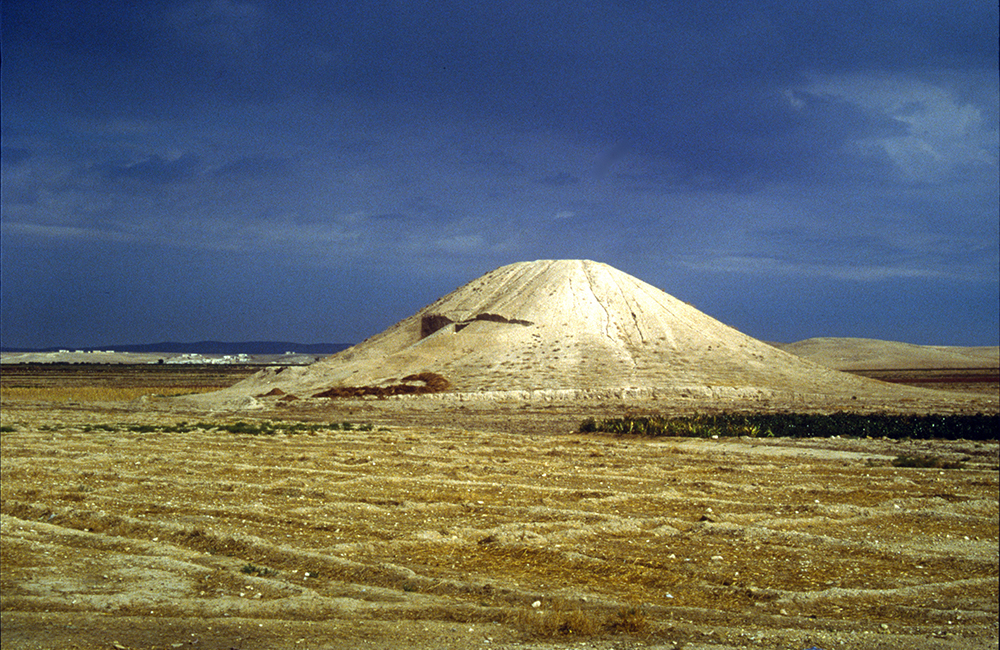
Tell Banat North, also known as The White Monument.
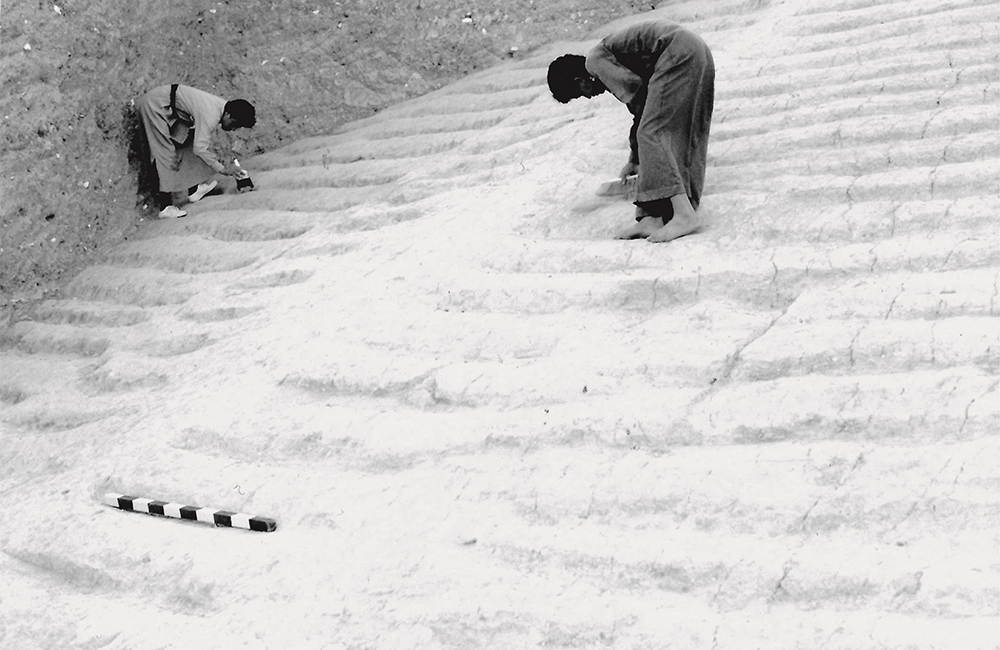 Corrugated surface of White Monument Phase B (Tell Banat North).
Corrugated surface of White Monument Phase B (Tell Banat North).
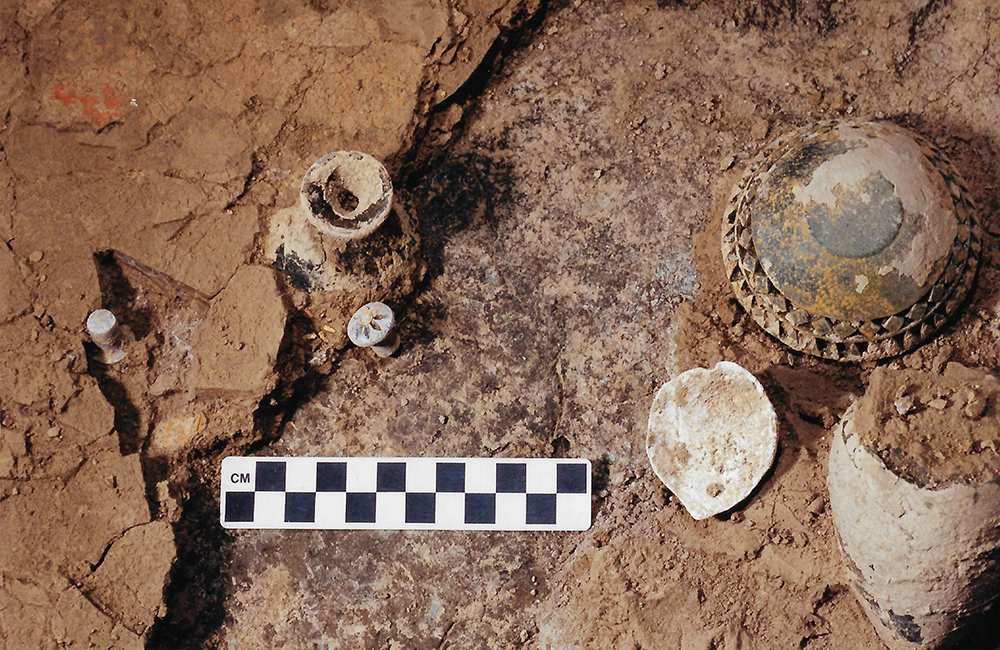 Unguent and cosmetic containers from the floor of Chamber F, Tomb 7.
Unguent and cosmetic containers from the floor of Chamber F, Tomb 7.
In addition to these final site reports, preparation of journal articles, book chapters, and public presentations is ongoing. NMC undergraduate and graduate students have the opportunity to do original research on these remains, contributing to the study of archaeology in Syria. Participants in the course NMC474: The Archaeology of Death have had an article accepted by the journal Antiquity (Porter et al. in press), with another soon to be submitted for publication elsewhere (Porter et al. forthcoming).


